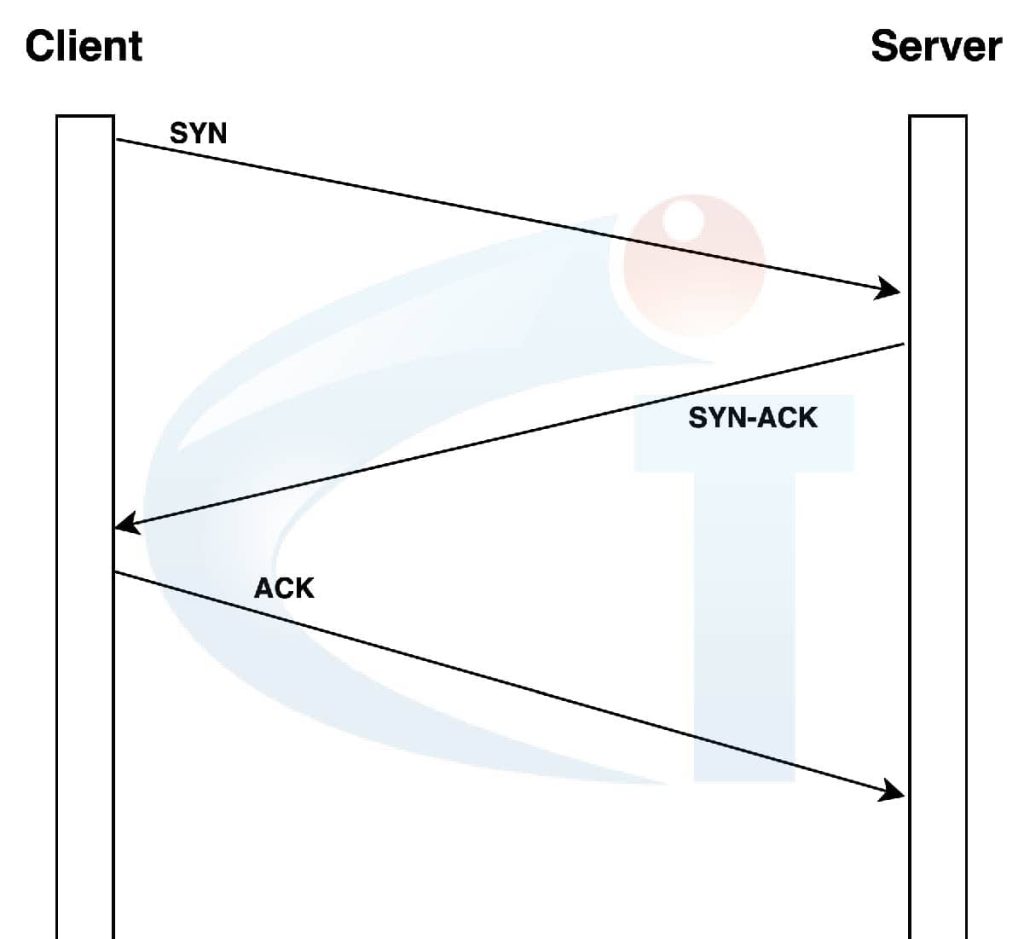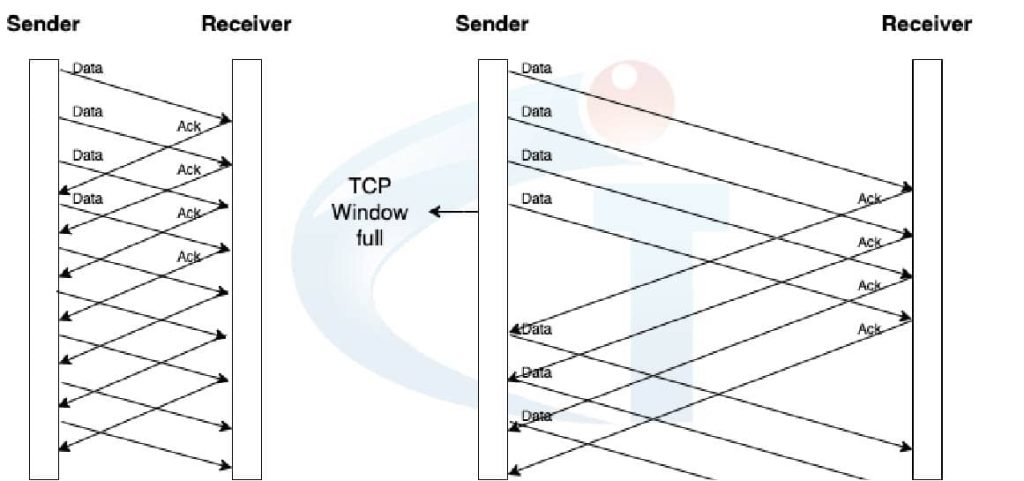
Table of Contents
ToggleIn this post, we’ll look at how to improve AWS performance with Cloud Management Tools. Enterprise networks today frequently claim multi-gigabit access to AWS, whether via Direct Connect os using IT Company AWS Cloud Management Tools. While network bandwidth is critical, many other factors influence performance, including physical distance, hardware, operating system, and application architecture. We’ll start with fundamental ideas, then dive into these pieces and provide best practices for optimizing AWS network resource consumption.
Basic Concepts and Tools
Round-Trip and Latency
Latency (or network delay) is the amount of time it takes for data to move from one location to another. Round-Trip Time (RTT) is the amount of time it takes for data to move from one location to another and return to its origin. RTT and latency are often measured in milliseconds (ms).
Throughput and Bandwidth
The maximum pace at which data may be transported along a route or network is referred to as bandwidth in computing. Throughput, on the other hand, refers to the actual pace at which data is carried across a network by an application. Both are measured in bits per second (bps) or multiples thereof (Kbps, Mbps, and Gbps).
Flows in the network
A network flow is another significant idea. Typically, flows are specified by the 5-tuple: source-ip, destination-ip, protocol, source-port, destination-port. This concept is sometimes limited to the three-tuple: source-ip, destination-ip, and protocol. Most networking systems track flows for performance reasons (caching route search results, for example) and to keep all packets from the same flow on the same path. This prevents out-of-order packets from arriving at the destination.
Other systems go it a step further and monitor connection statuses for connection-oriented protocols such as Transmission Control Protocol (TCP) (e.g., if a TCP connection is open). These are considered stately. AWS Network Firewall and firewalls in general are examples of stateful systems.
Creating a connection
To establish connections, TCP employs the 3-way handshake procedure. Following a “syn” packet from the client, there is a “syn-ack” from the server and a “ack” from the client. The link is then formed, and data may flow. This implies that the time necessary to connect is at least three times the one-sided latency.

Flow regulation
TCP employs a mechanism known as flow control to ensure that a certain bandwidth is available for data transmission. This ensures that no one flow consumes the whole bandwidth of a single physical channel. TCP employs a technique known as a sliding window to provide this flow management mechanism. The size of the window in a sliding window flow control approach specifies how much data may be delivered before getting an acknowledgment. As each packet is delivered, the window size shrinks until an “ACK” packet is received, signaling reception by the recipient. After receiving an ACK packet, the window size is extended, allowing for more packets to be transmitted. When the useful window reaches zero, the transmitter comes to a halt.

Performance Influencing Factors
In this part, we will go over the most prevalent variables that impact network performance and offer some suggestions for mitigating them.
Begin at the Ends
The first aspect that might impact performance is the number of resources interacting across the network (on-premises servers or Amazon EC2-based instances).
The available network bandwidth on an AWS current generation instance is determined by the instance family and size (number of vCPUs). An m5.8xlarge instance, for example, has 32 vCPUs and 10 Gbps network bandwidth inside the area, but a m5.16xlarge instance has 64 vCPUs and 20 Gbps network bandwidth. Some examples are documented as having “up to” a given bandwidth, such as “up to 10 Gbps.” These instances have a basic bandwidth and can burst to accommodate additional demand via a credit system. Instance families that end in “n” are Network Optimized and can handle more traffic. For example, m6in.16xlarge supports 100 Gbps, which is four times the speed of m6i.16xlarge.
Other network limits are available at the instance level, such as packets per second and IT Company AWS Cloud Management Tools. Amazon EC2 Elastic Network Adapter gives metrics to determine whether these allowances have been exceeded. It is typical to forget that these allowances apply to Amazon EC2 marketplace equipment as well, and they might be the root of certain performance concerns.
Operating system network implementations may also impose performance constraints. For example, the Linux kernel employs receive and send queues for packets. Typically, these queues are coupled to a single CPU core, and packets are load balanced between queues using flow characteristics. This indicates that there are performance restrictions for single flow throughput and packet rate. Amazon EC2 Elastic Fabric Adapter was created.
Internet
The Internet is made up of several interconnecting networks. Given the wide span of control of these networks, AWS does not and cannot give any sort of assurance on the end-to-end performance of connections passing through but our AWS Cloud Management Tools Does. Furthermore, because networks are dynamic, there may be significant fluctuations in link quality over time, which is sometimes referred to as “Internet weather.” Amazon CloudWatch Internet Monitor uses AWS telemetry on Internet weather to provide visibility into issues that may influence end user performance. AWS Global Accelerator offers a pair of Anycast IP addresses that are published at Amazon Points of Presence (PoPs) throughout the world and to which end customers can connect for TCP and UDP applications.
Site-to-Site VPN on AWS over the Internet
AWS Site-to-Site VPNs over the Internet are a quick and straightforward option for enterprises just starting their journey to the cloud to give layer 3 connectivity to AWS. This form of connectivity, however, is equally affected by Internet weather conditions. Accelerated Site-to-Site VPN connections increase performance and consistency by utilizing Global Accelerator technology.
In terms of capacity, each tunnel may deliver up to 1.25 Gbps. This bandwidth is heavily influenced by a variety of variables. If you utilize AWS Transit Gateway or AWS Cloud WAN for your VPNs, you may use BGP Equal Cost Multi-Path (ECMP) to load balance traffic between tunnels for a larger aggregated bandwidth.
MTU Path
Although raising the packet size (MTU) can assist enhance throughput, it must be done from start to finish to avoid packet fragmentation, which has the opposite effect.
The MTU size of 9001 bytes (Jumbo Frames) is supported by all current generation EC2 instances. However, keep in mind that the MTU might change depending on the path the packets take:
- The MTU for traffic sent over an IGW or inter-Region VPC Peering connection is 1500 bytes.
- Traffic via a Site-to-Site VPN is limited to a 1500 byte MTU less the encryption header size. The largest MTU that may be attained is 1446 bytes. However, because encryption techniques have different header length, you may not be able to achieve this maximum amount.
- Transit Gateway can handle traffic with an MTU of 8500 bytes.
Path MTU discovery
Path MTU Discovery (PMTUD) is a technique used by modern operating systems to determine the maximum MTU along a traffic path. There are various restrictions to using PMTUD:
- PMTUD is based on the fragmentation of an ICMP (Internet Control packet Protocol) packet (Type 3, Code 4). Some AWS Services (for example, AWS Site-to-Site VPN and Transit Gateway) do not return ICMP packets, and some security devices, such as firewalls, block ICMP communication, leading PMTUD to fail.
- Packetization Layer route MTU Discovery (also known as TCP MTU Probing) is an alternative approach that does not rely on ICMP for route MTU discovery. On Linux, PLPMTUD can be activated by editing configuration files. Specific steps can be found in your distribution documentation.
- TCP MSS Clamping is a technique that allows intermediary systems to communicate with one other.
Lagging Networks
The bandwidth-delay product is calculated by multiplying the connection bandwidth (in bits per second) by the round-trip time (in seconds). This figure is significant since it corresponds to the amount of data that can be transferred across the network prior to receiving and acknowledging it.
lengthy Fat Networks (LFN) are networks with a lengthy latency and a large bandwidth. To be more specific, networks where the bandwidth-delay product exceeds 105 bits (RFC 1072).
Previously, demonstrations of LFN were confined to geostationary satellites (with round-trip periods of more than 500ms). Long-distance point-to-point networks typically used 1.544Mbps (T1) and 2Mbps (E1) bandwidths, which kept the bandwidth-delay product low.

Using Asymmetric routing
Asymmetric routing is a network topology in which packets follow a single network path from source to destination, but return traffic does not utilize the same path in the opposite direction, instead using a separate route. Asymmetric routing complicates the design and makes discovering problems more difficult. It is not commonly recommended. Furthermore, because intermediary network hops may employ connection tracking, asymmetric routing might result in unanticipated outcomes such as missed connections and decreased network performance.
Recommendations
Aside from connection bandwidth, a variety of additional factors influence network performance. We summarize the following suggestions:
- Select your EC2 instances based on the performance requirements. Instances with network optimization offer maximum bandwidth and packet rates.
- Applications that operate over the Internet can have more consistent performance by using Global Accelerator.
- Visibility into Internet problems that might impair user experience is possible with CloudWatch Internet Monitor.
- When it comes to layer 3 connection, Direct Connect or Accelerated Site-to-Site VPNs are the most reliable options.
- Reduce latency by bringing data closer to the end user via CloudFront, Local Zones, Outposts, and AWS Wavelength.
- AWS Network Manager Performance Monitoring is a useful tool for tracking latency within AWS.
- TLS 1.3 and HTTP/3 are examples of contemporary technologies that can assist reduce latency.
- You should upgrade your operating systems and adjust the TCP Window to increase TCP throughput over LFNs.
Conclusion
Our IT company offers an excellent AWS Cloud Management Tools Service that will help you maximize AWS performance. Use key ideas and resources such as latency, throughput, and fluxes to increase the efficiency of your network. Learn about how to overcome operating system, instance type, and internet variability-imposed performance limits and optimize network resource use. Advice on MTU routes, site-to-site virtual private networks, and resolving lagging network problems can all help to improve connection. Follow advice to optimize EC2 instances, improve application performance, and guarantee reliable network operation. Our specialist solutions can help you easily improve your AWS performance!






